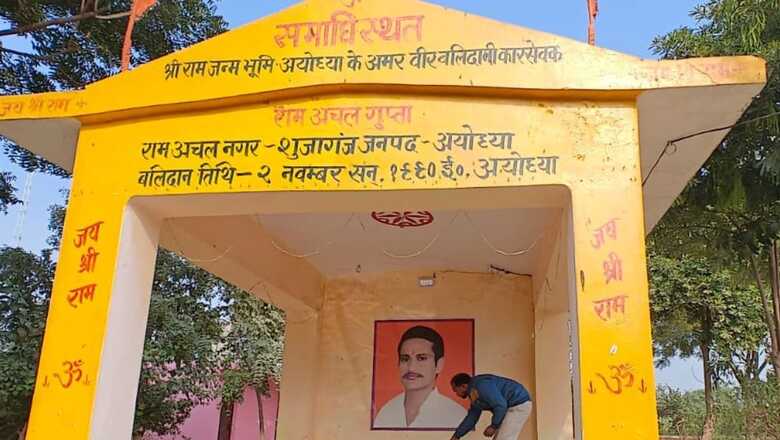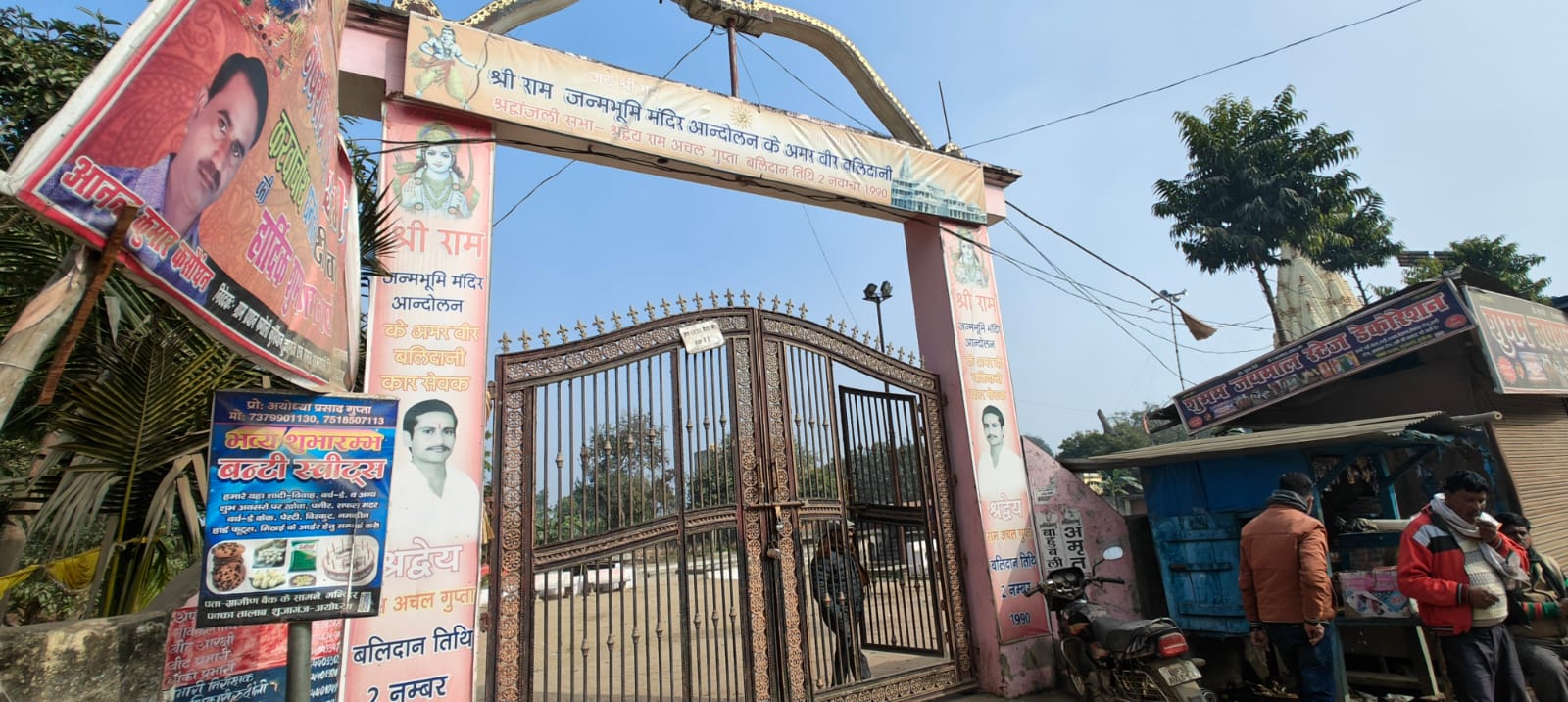
views
Shujaganj, a small town, around 45 km from the Ram Temple in Ayodhya is famous for two things — chaat and the iconic Samadhi Sthal of Ram Achal Gupta, who was among the first few volunteers, called ‘Karsewaks’, who died in a tragic firing incident on November 2, 1990 during Ayodhya’s Ram Temple movement.
With just seven days left for the ‘Pran Pratishtha’ ceremony of the idol of lord Ram, people of Shujaganj are queuing up at the Ram Achal Samadhi Sthal, which is also the only Samadhi Sthal of any Karsewak in Ayodhya, to pay homage to their true ‘Ram Bhakt’ for his selfless contribution which did not go to waste.
“I am thankful to the Shri Ram Janmabhoomi Trust, our Prime Minister Narendra Modi ji and our UP Chief Minister Yogi Adityanath ji for ensuring that the contribution of ‘Karsewaks’ didn’t go to waste. It’s an emotional moment for us, it’s the same Ram temple for which my father gave his life, the pain and sorrow we experienced in the last 33 years is hard to express in words," said Sandeep Gupta, younger son of Gupta.
People of Shujaganj said Gupta, who hailed from Rudhauli Police Station area in Ayodhya, was “very attached to lord Ram". “It was his dream to ‘free’ Bhagwan Ram from the disputed structure and ensure the construction of Ram temple," said Murari Lal Gupta, Gupta’s elder brother.
Murari Lal said it was for the same reason that Gupta was the first to register his name as a Karsewak from Shujaganj during the Ram Temple movement.

IN SEPT 1990
People said it all began in September 1990, when the Vishwa Hindu Parishad (VHP), Rashtriya Swayamsevak Sangh (RSS) and Shiv Sena campaigned for the Ram temple, demanding the construction of Ram temple at the Ram Janmabhoomi site in Ayodhya.
The situation, however, became volatile with LK Advani holding a rath yatra and the VHP mobilising the crowd to the site. On the other hand, then UP Chief Minister and Samajwadi Party (SP) founding member Mulayam Singh Yadav announced a complete lockdown in Ayodhya and had assured that “no bird would be able to fly in Ayodhya".
THE FIRING
On October 30, 1990, a large number of Karsewaks reached Ayodhya. Officials with the district administration said against the deployment of some 28,000 Uttar Pradesh Provincial Armed Constabulary (PAC), around 10,000 Karsewaks had reached Ayodhya.
The security forces were caught off guard as the Karsewaks stormed into the heavily guarded site, following which the police opened fire. “The incident moved Gupta. On November 2, 1990, Gupta and other Karsewaks decided to reach the site. In retaliation, police opened fire for the second time within 72 hours, resulting in the death of 26-year-old Gupta and other Karsewaks," said Murari Lal.
Murari Lal said being a local, police failed to dump the body and they managed to bring it back to Shujaganj. “Later, the locals transformed the place where his body was kept into Ram Achal Gupta’s Samadhi Sthal. People come and pay floral tributes to Gupta for his selfless contribution to the Ram temple movement," added Murari Lal.
Gupta’s demise at an early age, leaving behind two sons and one daughter, however, left the family in a crisis. “We were clueless, with no help from the administration or the government. The family opened a small grocery store in Shujaganj bazar area," said Rajkumari, 56, Gupta’s wife.
“There was no support from anyone. I took up petty jobs to meet the expenses of the family and to ensure that all three children get proper education. I am thankful to the almighty that I managed to fulfill my responsibility and today all of them are married," she said.
She is happy that Gupta’s dream of constructing Ram temple is getting fulfilled.
On Saturday, when the Ram Temple trust officials reached Gupta’s house to invite them to the Pran Pratishtha ceremony, the family couldn’t control their emotions. The officials and family members paid homage at the Samadhi. The family members, however, have extended one last wish that Shujaganj, named after Nawab Shuja-Ud-Daulah, be renamed in the name of Ram Achal Gupta.













Comments
0 comment